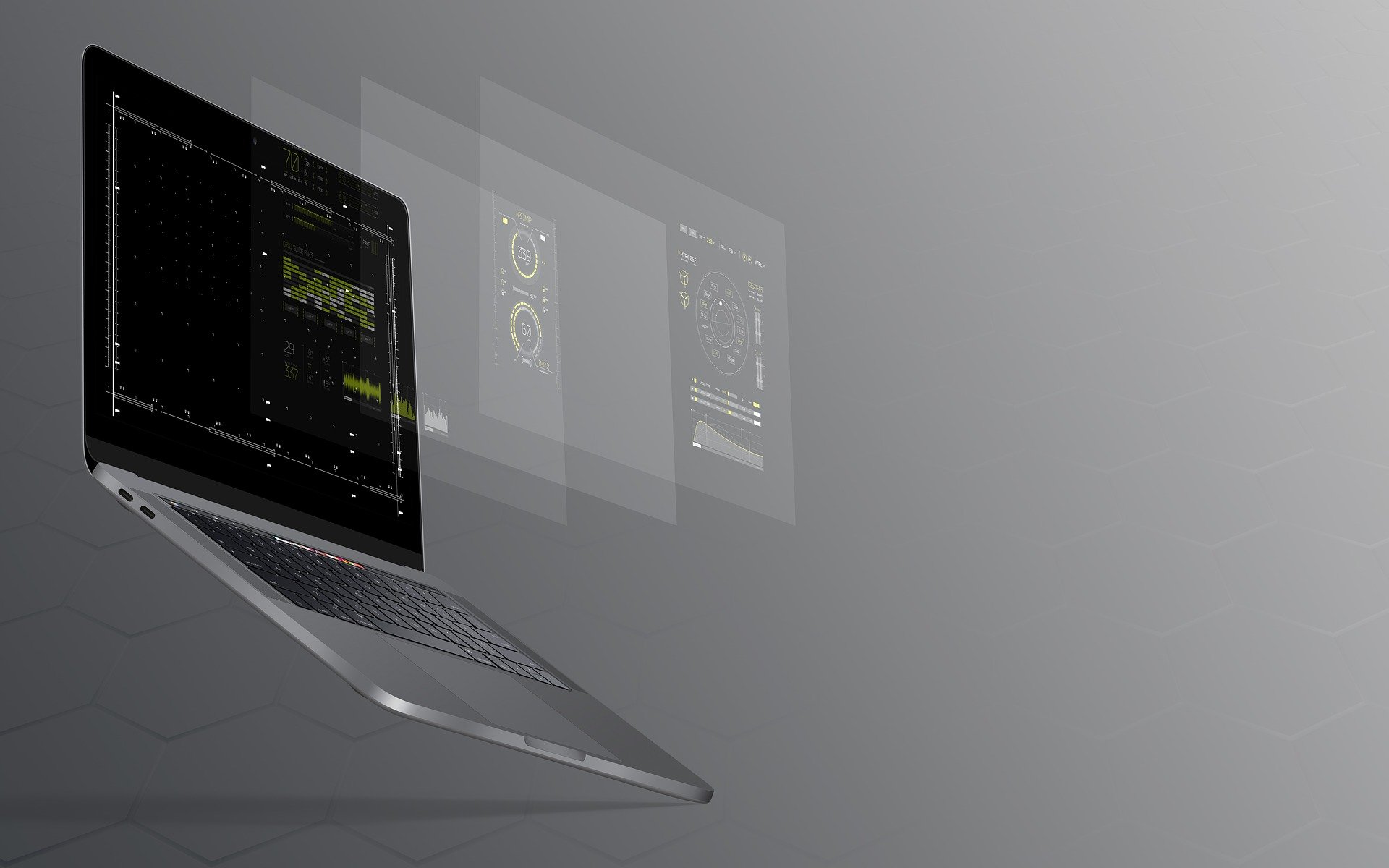Data Centre Software for Smarter Operations
Data
Data Centre Operations: Optimising Infrastructure for Performance and Reliability
Data Centre Security: Protecting Infrastructure from Physical and Cyber Threats
Data Centre Software for Smarter Operations
Essential Disaster Recovery News for Data Centres
Infrastructure Management for Modern Data Centres
Gemserv and Trilliant partner to ensure the protection of data
Gemserv has announced a partnership to provide enhanced security assurance for Trilliant Head End Software deployments. With products and service platforms now becoming fully connected, Gemserv has stepped in, in the preparation of security assurance processes and procedures to ensure that all connection points are robust, be they device components, additional enterprise interfaces or third-party systems.
“We are delighted to be working with Trilliant to ensure
that customers, wherever they are, can reap the benefits of smart grid
technology in a secure and integrated way” says Alex Goody, Gemserv Chief
Executive. “From enabling net zero to become a reality, to improving
patient care in their own homes and improving the customer experience for all,
Gemserv and Trilliant are delivering a smart future”.
As customer connected smart devices become increasingly available, the expectation is for interoperability between systems and devices that provide, for example, better energy usage, remote healthcare provision and property monitoring. Ensuring the compatibility of such systems with proven security credentials is becoming a key business driver, although implementation can be complex.
This partnership combines Gemserv’s expertise in IoT, smart metering and cyber security with Trilliant’s globally proven communications solution. Together, the organizations will provide a turnkey solution that reduces the pain points of IoT system implementation.
“The Trilliant Head End Software is designed to seamlessly connect power grids, distribution networks, smart meters, smart city, and smart home connected devices, often expanding from the initial platform provider to new service providers,” comments Andy White, Chairman and CEO for Trilliant. “We put security and data privacy at the heart of our solution and have developed an ethos throughout our business of putting security first. Trilliant welcomes the partnership with Gemserv to provide enhanced security assurance to our customers.”
The agreed partnership between Trilliant and Gemserv covers
strategy, planning, system implementation, security assurance for design, build
and testing phases, as well as continued implementation throughout the
long-term deployment and horizontal expansion into new business sectors.
Beatrice - 14 December 2020
Artificial Intelligence in Data Centre Operations
Data
Data Centre Operations: Optimising Infrastructure for Performance and Reliability
Data Centre Software for Smarter Operations
Infrastructure Management for Modern Data Centres
News in Cloud Computing & Data Storage
Fujitsu Increases Data Availability for SMEs with Veeam
Veeam addresses all these data protection needs, with backup for on-premises virtualised data infrastructures and enhanced backup for cloud-based AWS, Azure and Microsoft Office 365 installations.
Small and mid-sized businesses seeking increased data availability and faster recovery from disasters can now benefit from Veeam Cloud Data Management solutions offered by Fujitsu to provide simplified and automated backup.
Faced with more and more workloads moving to the cloud, rampant data growth, complex infrastructures and the increasing risk of data loss, small and midsize enterprises need to develop complete backup strategies to protect data residing on-premises and in the cloud. Companies must also be capable of rapidly restoring systems, applications and data to safeguard business continuity against unplanned system downtime, data loss or corruption.
The collaboration with Veeam extends Fujitsu’s vendor- and platform-agnostic Data-Driven Transformation
Strategy (DDTS) to optimise organisations’ data assets. One aspect of this approach is to create transparency of data wherever it resides – inside and outside the organisation – and in any platform, solution, or architecture.
The deep integration of Veeam’s solutions into its
ecosystem underlines Fujitsu’s role as a trusted transformation partner. With
many organisations using multiple backup solutions, the availability of Veeam’s
Cloud Data Management portfolio - together with Fujitsu data centre offerings,
such as PRIMERGY server, PRIMEFLEX Integrated System and ETERNUS storage1 - is the latest
example of how Fujitsu is addressing the need for flawless backup across
heterogeneous environments.
Pricing and availability
Veeam solutions are
orderable and deliverable from Fujitsu direct
sales and channel
partners with immediate
effect in Austria, Belgium, Denmark, Finland, France, Germany, Ireland, Italy, Luxembourg, The Netherlands, Norway, Portugal, Spain, Sweden, Switzerland and United Kingdom.
Fujitsu
plans to introduce availability in other European countries in due course.
Beatrice - 11 December 2020
Data Centre Build News & Insights
Data Centre Operations: Optimising Infrastructure for Performance and Reliability
Data Centre Software for Smarter Operations
Infrastructure Management for Modern Data Centres
Renewables and Energy: Infrastructure Builds Driving Sustainable Power
Arriva drives green mobility with power infrastructure at bus depot
How smart e-mobility infrastructure supports the transition to carbon neutral public transport in the Merseyside area.
Arriva Merseyside is a public transport operator running bus services in and around the Liverpool City Region, providing public transport services to the nearly 1.5 million local residents.
Arriva is committed
to making its business carbon neutral by 2030. The company also wants to reduce
its impact on air quality in the urban centres where its services operate.
In 2018, Arriva
Merseyside purchased 12 Enviro Buses, BYD ADL Enviro200EV single deck pure
electric buses to serve some of the bus routes in Liverpool’s city centre. The
e-buses joined the 51 hybrid and 9 gas buses already added to the fleet earlier
that year. This was the introduction of the final part of a £21 million
investment into cutting edge green technology from Arriva Merseyside. The
purchase was also supported through a successful £5 million bid for Government
(OLEV) funding for new, greener buses, in partnership with Arriva.
“Arriva is committed to reducing carbon emissions, both by encouraging more people to use public transport and by minimising our own environmental impact” says Marcello Giovanardi
Category Manager –
Fuel, Lubricants, Utilities at Arriva. “We were already working with Schneider
Electric as our partner on energy bill validations and commodity risk
management for the depot, so we’re aware of their expertise in this area and
reputation for delivering reliable high-performance solutions.”
Arriva’s
environmental commitment extends to its power infrastructure, which is vital to
supporting the increasing number of electric vehicles in its fleet. They were
therefore seeking a partner with strong sustainability credentials to design
and install the electrical infrastructure to deliver an industrial supply at
the depot in Green Lane, Merseyside. The central requirement of the project was
to provide reliable and secure electricity supply for 6 double bus chargers on
a charging island in the middle of the depot.
A key goal was to
minimise disruption to normal bus services during the installation process. It
was essential that the solution enabled a reliable and resilient power supply
with 100% uptime to the electric bus chargers. The provider of electrical
infrastructure would be required to work in close collaboration with both the charger
manufacturer and the local network operator, to ensure all components of the
new system met the required regulatory standards as well as Arriva’s Health
& Safety policy for people on site.
The solution itself
was required to be highly durable and withstand all weather in its outdoor
location, whilst also having a minimal footprint as space is at a premium in
the urban setting of the Green Lane depot.
With Arriva’s
commitment to transition towards emissions-free operations, the charging
infrastructure would also need to have capacity to grow the number of electric
buses it services in the future.
The project began
with a comprehensive consultation process with Arriva Merseyside and the other
technology and utilities partners involved, Schneider Electric, led by its
Power Consultancy team. The parties then designed, then installed and
manufactured an 11kV packaged substation in a configuration tailored to the
project requirements. Key features included the implementation of a low voltage
MCCB feeder pillar, RN2c T2/21 ring main unit (RMU), and transformer to step
down the supply to 415v as required by the chargers. The MCCB feeder pillar
featured ComPact NS circuit breakers at 1600A to enable built-in power and
energy metering functionalities through embedded MicroControl units. The direct
coupling used in the substation design means that the product required minimal
cabling to be installed and will require minimal maintenance over its lifetime,
reducing overall cost.
The 11kV packaged substation,
including switchgear and transformer, is manufactured in Schneider Electric’s
plant in Leeds under a direct and controlled factory assembly, making the
overall product incredibly safe. The packaged substation offer is also
consistent with Arriva Merseyside’s environmental commitment, having been
manufactured to meet the ISO 14001 environmental standards as standard.
The substation was
installed on the depot’s land near the perimeter of the site, making the most
effective use of space available in the urban location. This was possible due
to the highly durable design of the components. The MCCB feeder pillar,
designed for the UK market, is fully compliant with ISO 12924 standard to
ensure that components will not rust even when constantly exposed to the
elements for years.
Delivered as a
single unit, the substation implementation was a time-efficient and streamlined
process, successfully minimising disruption to on site operation of bus
services during the project. The unit also has capacity to support a larger
number of chargers, should Arriva Merseyside decide to expand the all-electric
portion of its fleet in future – without further expansion of the depot’s power
infrastructure.
The depot now has
two separate power supplies, providing back up capability where required to
ensure Arriva has even greater resiliency of supply.
Arriva Merseyside
now has a safe, reliable and convenient charging infrastructure in place for
the 12 electric buses in its Merseyside fleet. Continuous achievement of 100%
uptime and a charge time of 4-6 hours allows buses to be charged overnight,
which is convenient, efficient, and cost-effective. Using this system, Arriva Merseyside
can now operate its first all-electric bus route in Merseyside. The Schneider Electric
solutions are contributing to cleaner, greener public transport for the
Merseyside area.
Arriva Merseyside
now has the capacity to scale the number of chargers at the Green Lane depot
going forwards, to accelerate its progress towards its carbon neutral 2030
goal. The shift towards more electrified public transport is expected to combat
air pollution in the local area, as well as take Arriva one step closer to its
company-wide carbon neutral goal.
EcoStruxure is
Schneider Electric’s open, interoperable, IoT-enabled system architecture and
platform. EcoStruxure delivers enhanced value around safety, reliability,
efficiency, sustainability, and connectivity for our customers.
EcoStruxure leverages advancements in IoT, mobility, sensing, cloud, analytics, and cybersecurity to deliver Innovation at Every Level including Connected Products, Edge Control, and Apps, Analytics & Services. EcoStruxure has been deployed in 480,000+ sites, with the support of 20,000+ system integrators and developers, connecting over 1.6 million assets under management through 40+ digital services.
Beatrice - 11 December 2020
Data
Data Centre Infrastructure News & Trends
Data Centre Operations: Optimising Infrastructure for Performance and Reliability
Data Centre Software for Smarter Operations
Infrastructure Management for Modern Data Centres
Scalable Network Attached Solutions for Modern Infrastructure
Thomson Reuters taps AWS to power digital transformation
Amazon Web Services has announced that Thomson Reuters has successfully completed a large scale migration to AWS, which will enable the company to innovate faster, develop and act on new insights, and become a more agile business in the cloud. As part of its ongoing move to the cloud, Thomson Reuters migrated thousands of servers and hundreds of revenue-generating applications to AWS. Expanding its longstanding relationship with AWS, Thomson Reuters is also leveraging AWS’s unparalleled portfolio of cloud services including analytics, database, containers, serverless, storage, machine learning, and security to innovate new digital products for its customers and reveal greater insights into the industries it covers.
Thomson Reuters provides highly specialized information-enabled software and tools for legal, tax, accounting, and compliance professionals, combined with Reuters, the world’s global news service. Across these sectors, its products and tools help professionals better understand their industries, streamline operations, increase efficiencies, and mitigate risk. In 2018, Thomson Reuters partnered with AWS Professional Services, AWS Managed Services (where AWS operates infrastructure on a customer's behalf), and AWS Certified third-party experts from multiple consulting partners who provided hands-on expertise, day-to-day infrastructure management, and cost optimization. The decision to use these AWS resources enabled Thomson Reuters to complete this migration project five months ahead of schedule. By leveraging AWS Managed Services, Thomson Reuters moved hundreds of mission-critical, legacy applications from across their global business units to the cloud and into production quickly. To further streamline this migration, Thomson Reuters leveraged the AWS Marketplace to access simplified software contracting services to rapidly procure and integrate their preferred third-party software into their AWS environment.
Additionally, Thomson Reuters has developed an internal platform to apply machine learning at scale using Amazon SageMaker – AWS’s service for building, training, and deploying machine learning models in the cloud and on the edge – to help developers and data scientists quickly gain new insights from real-time and historical data in a fully managed and secure environment. The platform saves developers and data scientists countless hours of coding by providing all of the components used for machine learning in a single toolset so models get to production faster with much less effort and at a lower cost, enabling Thomson Reuters to deliver new, intelligent solutions for their customers. Thomson Reuters uses Amazon SageMaker to automatically shut down GPU instances when a training job is done and leverages Amazon Elastic Compute Cloud (Amazon EC2) Spot Instances – unused EC2 capacity that is available at up to a 90% discount compared to On-Demand prices – to reduce the cost of machine learning model inference.
“Thomson Reuters provides the intelligence, technology, and expertise that our customers need to solve their toughest regulatory, legal, and compliance challenges,” says Justin Wright, Vice President of Architecture and Development, Thomson Reuters. “We’re leveraging AWS’s comprehensive set of cloud services to develop insightful new products and services that will help our customers reinvent the way they work and operate effectively in complex arenas. AWS is a trusted resource for us – especially AWS Managed Services and AWS Professional Services – providing the expertise to accelerate our move to cloud and helped migrate data centers ahead of schedule.”
“Thomson Reuters is using the cloud to put accurate data and information into the hands of professionals across the legal, tax and accounting, and news industries to make important and timely decisions,” comments Greg Pearson, Vice President, Worldwide Commercial Sales at Amazon Web Services, Inc. “By leveraging AWS’s depth and breadth of services with the expertise of AWS Managed Services, Thomson Reuters is able to eliminate the heavy lifting of managing infrastructure operations and focus on innovating new ways to deliver in-depth information and digital solutions to deliver new and timely insights to customers around the world.”
Beatrice - 9 December 2020
Data
Data Centre Infrastructure News & Trends
Data Centre Operations: Optimising Infrastructure for Performance and Reliability
Data Centre Software for Smarter Operations
Data Centres
Enterprise Network Infrastructure: Design, Performance & Security
Infrastructure Management for Modern Data Centres
News in Cloud Computing & Data Storage
Redis Labs experiences 63% customer growth with Redis Enterprise cloud
Redis Labs has announced continued customer growth with Redis Enterprise Cloud on AWS, with growth of 63% over the past two quarters and new integrations with AWS Outposts and HashiCorp Terraform. In combination with Redis Enterprise's Active-Active geo-distribution technology, both integrations will make it even easier for companies to migrate, build, operate, and scale their applications throughout the cloud lifecycle.
Redis Enterprise
Cloud on AWS is a cost-effective, fully managed Database-as-a-Service (DBaaS)
available as a hybrid and multi-cloud solution. Built on a serverless concept,
Redis Enterprise Cloud simplifies and automates database provisioning. Users
select the memory limit and throughput, and Redis Enterprise Cloud will
provision the proper infrastructure and resources in a fully automated manner.
Designed for modern distributed applications, Redis Enterprise Cloud also
delivers sub-millisecond performance at a virtually infinite scale. This allows
developers and operations teams to deliver intelligent, high-performance,
scalable, and resilient applications faster using Redis native data structures
and modern data models.
Deliver
low-latency solutions––anywhere
Redis Labs has
achieved the AWS Outposts Ready designation, part of the Amazon Web Services
(AWS) Service Ready Program. AWS Outposts is a fully managed service that
extends AWS infrastructure, AWS services, APIs, and tools to virtually any data
center, co-location space, or on-premises facility for a truly consistent
hybrid experience.
This new
integration will enable Redis Labs customers to run on-premise with AWS
Outposts, as well as in a hybrid-cloud deployment while getting all the
benefits of a fully managed Redis solution, including:
Five nines uptime at any scale for globally distributed dataActive-Active Redis deployments across AWS regions and hybrid deploymentsSeamless migration between on-premises to the cloud, while avoiding a single cutoff A unified real-time data experience across data structures and modern data modelsAttractive total cost of ownership for large (using Redis on Flash) and small (multi-tenant architecture) datasets
Achieving the AWS
Outposts Ready designation differentiates Redis Labs as an AWS Partner with a
product fully tested on AWS Outposts.
Create and
manage Redis resources––anywhere
The new integration with HashiCorp Terraform allows Redis Enterprise Cloud customers to easily provision and manage Redis Enterprise Cloud databases alongside any cloud infrastructure resources––including with AWS services––that their application requires, all written as code. Designed to fit the workflows modern software teams are adopting, the HashiCorp Terraform Redis Enterprise Cloud Provider makes infrastructure management predictable and reproducible, so fewer errors are made, and development can be more efficient.
As enterprises
continue to make Redis Enterprise a core data platform service across the
business, delivering Redis Enterprise Cloud as a provider in HashiCorp
Terraform will simplify deployments, standardize configurations while giving
the freedom to deploy Redis on their preferred infrastructure platform. The
HashiCorp Terraform Redis Enterprise Cloud Provider is a verified plugin
approved by HashiCorp and maintained by Redis Labs.
Comments on
the News
"Redis Enterprise Cloud is a fast-growing choice for companies to unify their global real-time data by offering unparalleled 99.999% uptime, at any scale, anywhere," Explains Yiftach Shoolman, Co-Founder and CTO at Redis Labs. "Our customers are building, deploying, and operating applications over on-premises or hybrid-cloud. Integrating Redis Enterprise with AWS Outposts aligns with our mission to make our customers' cloud journey successful. Along the same path, HashiCorp Terraform makes deploying Redis databases easier, with greater consistency, and enables teams to spend more time on how Redis can solve their real-time data needs.
"Companies are modernizing their infrastructure solutions to optimize every aspect of the customer experience," comments Joshua Burgin, General Manager, AWS Outposts, Amazon Web Services, Inc. "We are delighted to welcome Redis Labs to the AWS Outposts Ready Program. Redis Enterprise can help customers create more responsive applications on AWS Outposts, in AWS Regions, and on customer-owned hardware for a truly consistent hybrid experience."
"We've moved business-critical functions to Redis Enterprise Cloud because it lets us deliver software more quickly and focus on our product," says Mattius McLaughlin, Site Reliability Engineering Manager at Zapier. "As our SaaS product grows, we depend on Redis Enterprise Cloud to help us rapidly scale to meet the needs of our customers. With the performance, availability, and reliability we get from Redis Enterprise Cloud, our team can be confident the platform will satisfy our business today, and will scale to meet our demands in the future."
Beatrice - 9 December 2020
Data
Data Centre Operations: Optimising Infrastructure for Performance and Reliability
Data Centre Software for Smarter Operations
Data Centres
Infrastructure Management for Modern Data Centres
Scalable Network Attached Solutions for Modern Infrastructure
NETGEAR debuts four new Gigabit Ethernet Plus switches
NETGEAR has announced the availability of four new PoE+ Gigabit Ethernet Plus switches (GS305EP, GS305EPP, GS308EP, and GS308EPP). NETGEAR Plus switches provide the fundamental network management features that small businesses demand.
Small and home-based business networks are expanding by adding power over ethernet IP-connected devices such as Voice-over-IP (VoIP) phones, IP cameras for surveillance, WiFi access points and many other applications. To provide businesses and home offices with even more control and security together with easy management over their expanding networks, an all-in-one solution which also provides power for these IP-based applications is crucial. To address this need for an affordable all-in-one solution, NETGEAR is introducing four new Gigabit Ethernet Plus switches with PoE+ power and essential management capabilities. Providing businesses and home office workers with uninterrupted PoE and PoE+ capabilities with advanced per port controls, GS308EP, GS305EP, GS305EPP and GS308EPP include simple management features like VLANs, QoS, port mirroring, and uninterruptable PoE to help optimize the performance and troubleshooting of business networks.
Available at a minimal added cost over that of unmanaged switches, while offering the benefits of essential advanced network management, the Plus switches feature a new, modern, and intuitive business and consumer-friendly Graphical User Interface that is both browser and mobile friendly in 3 languages.
“As businesses further develop their networks to provide IP-based solutions, they have a need for easy-to-use network management capabilities in a secure environment,” comments Richard Jonker, vice president of SMB product line management for NETGEAR. “These new PoE+ switches deliver on this capability, with the power to host IoT devices and wireless access points along with an intuitive graphical user interface for management while providing a secure environment with separated network segments over VLANs, all in a budget-friendly package.”
With auto-sensing 10/100/1000 Mbps non-blocking Gigabit Ethernet ports with a total bandwidth of 10Gbps (5-port) and 16Gbps (8-port), these new Plus switches provide power budgets up to 123W for powerful PoE+ deployments and easy configuration of advanced features for the network. The new Plus switches deliver 4 or 8 PoE+ ports with 62W to 123W (model dependent) to provide power and network connectivity to PoE+ devices. Along with PoE+ capabilities, the new Plus switches include management features such as advanced per port PoE controls to simplify management of connected devices and uninterrupted power to keep devices connected and active even during firmware or software updates. Work from home offices and businesses can rest assured that the PoE power to their IP security cameras, VoIP phones and wireless access points is always on with this feature.
These new NETGEAR Plus switches also include the following power saving features:
Energy Efficient Ethernet (IEEE 802.3az) for maximum power savings —Latest energy-saving abilities including per-port power management to reduce port power when the port link is down, or idleFanless, with versatile mounting options –Completely silent operation in a desktop small form factor that is also wall-mountableAdvanced per port PoE controls – Power management of the PoE connected devices by enabling and disabling PoE power per port, PoE prioritization, PoE power limit per port and more. Simplifies management of Wireless APs, IP security cameras, LED lighting, secure access door locks, IoT devices and moreUninterrupted PoE – Keep PoE power on to connected devices even when the switch is updating firmware or performing a soft reboot
And, to safeguard the security of the network, the VLANs can be configured separately for each sub-network. For example, set up a VLAN for guests, one for admin and a separate one for IoT devices. The Plus switches also include the following added security and reliability features:
Port Mirroring - For network diagnostics and troubleshootingComprehensive QoS - Advanced controls for optimized network performance and better delivery of mission-critical traffic such as voice and videoIGMP Snooping - Improved network efficiency on delivering multicast traffic. Save cost and improve network efficiency by ensuring multicast traffic only reaches designated receivers without the need of an extra multicast routerVLANs – Port-based and 802.1Q-based network separation into smaller groups for more secure and efficient use of network resourcesLoop Detection and Auto DoS Prevention - Detect accidental network loops and protect against DoS attacksCable Test – Easily identify the health status of Ethernet cables to quickly resolve connectivity issues
With multi-language support in English, German, and Japanese, along with a category-leading 5-year warranty and 90-days free technical support via phone/email/chat, the Plus switches are now available worldwide.
Beatrice - 9 December 2020
Artificial Intelligence in Data Centre Operations
Data
Data Centre Operations: Optimising Infrastructure for Performance and Reliability
Data Centre Software for Smarter Operations
Infrastructure Management for Modern Data Centres
National Institute for Health Research: Framework for biomedical research
Every breakthrough in modern medicine comes down to years of painstaking research. The UK’s National Institute for Health Research (NIHR) aims to make that research as effective as possible for as long as possible. “We’re the research partner of the National Health Service and the public health and social care systems,” says Justin Riordan-Jones, Head of Systems and Information at the Department of Health and Social Care. “Ultimately, our mission is to improve the health and wealth of the nation. We do this by providing the funding, training, and infrastructure for world-class biomedical research to take place in England.”
“We wanted a solution that would empower us to operate as a single corporate entity over multiple locations, multiple platforms, and multiple scenarios. For us, the answer is Google Workspace” he continues.
Founded in 2006, the NIHR works with government departments, hospitals, educational institutes, researchers, and patients to engage as many people as possible in the country’s health and care research system. As a national organization, it has to coordinate the efforts of thousands of employees and partners spread out across multiple locations and organizations. By 2015, after years of trying to harmonize the various different email addresses, data repositories, and collaboration tools across its organization, the NIHR needed a new way of working. It embarked on a comprehensive digital transformation, powered by Google Workspace.
“We wanted a solution that would empower us to operate as a single corporate entity over multiple locations, multiple platforms, and multiple scenarios,” comments Justin. “For us, the answer is Google Workspace.”
Multiple physical locations,
a single digital hub
The NIHR ultimately works for the benefit of everyone, with hundreds of research projects across the UK as well as low- and middle-income countries. But its immediate contacts are with government departments, universities, hospitals, and private companies. More than just a funding body, the NIHR aims to improve the training and ecosystem around medical research in the country. As such, it’s a geographically dispersed institution with four main coordinating centres. Most employees work mainly in the centres, but researchers and partners can be based in universities and hospitals across the country.
As the organization grew,
managing staff and partner communications became more complex and departments
became increasingly siloed. “We didn’t have a corporate email address for
everyone working with us, because they were organized by their host locations
on our platform,” says Justin. “Our system worked in the beginning, but the
lack of consistency was starting to slow down our progress.”
In 2014, the NIHR decided to build a new digital hub to simplify communication and collaboration and centralize key processes. To lead this digital transformation program, it collaborated with Google Cloud Premier Partner PA Consulting.
Together, they conducted a
rigorous test of various office productivity platforms, ultimately deciding on
Google Workspace for its ease of use, out-of-the box functionality, and
commitment to innovation. “We’re in research and development, so we need to be
using the latest tools,” explains Justin. “When we looked at the development
pathway and what Google Workspace was planning, we were impressed, particularly
with how Google Meet enabled us to hold meetings without staff having to travel
to multiple locations. One meeting could previously incur costs of up to £200
per person, not to mention time wasted during the commute.”
Over the following year, the
NIHR and PA set to work replacing the NIHR’s existing productivity platform
with Google Workspace. For a government organization with several layers of
compliance, transformation projects can be fraught with challenges. However,
with PA’s help, the NIHR succeeded with minimal disruption. “PA assisted us in
two very important ways,” says Justin. “First, it gave us unbiased advice,
which is exceptionally important when we’re making big decisions about our
future. Second, we were able to benefit from its knowledge, expertise, and
experience in the public and private sectors.”
The NIHR transformed its communication with Gmail, allowing all its users to have corporate email addresses for the first time. Thanks to the switch, staff also have the option to use Google Meet when talking over a video call would be more effective than email. And with Google Docs, Google Sheets, and Google Slides, several people can collaborate on the same documents in real time, then store and share those documents quickly and easily using Google Drive.
On top of making communication
and collaboration easier for NIHR staff, Google Workspace has also helped to
ease the administrative task of managing so many people across so many
different areas while still maintaining the highest standards of security.
“Many researchers join us for a short amount of time and leave after the
project finishes. But as a government organization, we deal with sensitive
material, and information security is of the highest importance to us,”
explains Justin. “With Google Workspace, we don’t risk losing data or having to
manually transfer files from one place to the other. Instead, we have an easy
way to securely handle on- and offboarding.”
“We chose Google Cloud Search for the power of its search
functionality and its stability. As part of Google Workspace, we knew it would
do everything we wanted and fit seamlessly into our system.” —Justin Riordan-Jones, Head of Systems and Information,
Department of Health and Social Care
More effective research and
improved efficiency
With its digital hub, the NIHR
hasn’t just changed its day-to-day processes; it has transformed the way its
employees work. “We’ve adopted a continuous improvement mindset,” shares
Justin.
Together with PA, it runs a
survey every year asking for feedback on what features work best for users and
what can be improved. In 2019, this survey opened the way to improving
collaboration even further, specifically in the way data is shared across the organization.
The way the NIHR was initially
organized meant that several data sources were unintentionally isolated within
their host coordinating centers. That meant they were effectively invisible to
the rest of the NIHR. As staff worked more closely with one another, they
realized that some information was available but not necessarily accessible to
those who needed it, and the NIHR wanted to tackle this head on. “We’re a
centralized yet autonomous, knowledge-based organization, with large amounts of
data in repositories that people should be able to access as quickly and easily
as possible,” says Justin. “Instead, they knew the data existed, but getting
access to it was frustrating. We wanted to find a way of making all that
information easily discoverable.”
The NIHR found its solution in Google Cloud Search, which seamlessly integrates with Google Workspace to provide search functionality across the entire technology infrastructure. Over 16 weeks, the NIHR worked with PA to redesign its digital platform, placing Cloud Search at the heart, so that users could harness its power on a daily basis, sharing data and collaborating more quickly and easily than ever before.
“We chose Cloud Search for the
power of its search functionality and its stability,” says Justin. “As part of
Google Workspace, we knew it would do everything we wanted and fit seamlessly
into our system.”
“Throughout lockdown, we’ve been using the full range of
Google Workspace products to coordinate our urgent public health studies. The
hub we have built is the fundamental backbone to our operations.” —Justin Riordan-Jones, Head of Systems and Information,
Department of Health and Social Care
Adapting to new challenges
at speed
The new NIHR hub, complete with
Cloud Search, went live in March 2020, just as the UK and much of the world
went into lockdown due to COVID-19. Soon, the NIHR faced a unique set of
challenges: not only did it have to work within quarantine guidance, it also
needed to shift its priorities to helping researchers tackle COVID-19.
The NIHR’s new digital hub
became more useful than ever, enabling it to continue working without pause.
Its use of Meet went up by 379% within two months of quarantine, showing how
video conferencing has helped to replace face-to-face meetings. Meanwhile,
users share and collaborate on documents more frequently, with Drive usage
increasing by 198%. “We went from being an organization that works in a variety
of offices and locations to working from home overnight,” says Justin. “Because
of Google Workspace and the hub that we had built with it, that transition was
seamless and so far there has been no seriously detrimental effect on our
performance.”
Refocusing its resources to deal
with COVID-19 has perhaps been the biggest challenge faced by the NIHR to date.
As the situation unfolded, the NIHR set up and coordinated about 50 urgent
public health studies into the effects of COVID-19, including two major studies
of possible vaccines.
Typically, major research projects require months or even years to get off the ground, but the digital hub has helped the NIHR to spin them up within days and weeks. Studies like these require large numbers of people to meet and scrutinize a long list of supporting documents. The NIHR used Forms to survey its members and partners and find the right people, while Google Cloud Search made vital information discoverable within seconds. Justin explains how the digital hub made it all possible: “Throughout lockdown, we’ve been using the full range of Google Workspace products to coordinate our urgent public health studies,” he says. “The hub we have built is the fundamental backbone to our operations.”
As the NIHR adjusts to the new
reality of working today, it still keeps one eye on the future. The institute
has taken steps to build on the foundation that Google Workspace and the hub
have already made. “We recently hired our first Chief Digital Officer,” says
Justin. “He’s been very impressed with the technology and the architecture we
have in place with Google Workspace, and we’re looking forward to expanding the
NIHR’s digital strategy in the future.”
Beatrice - 8 December 2020
Colocation Strategies for Scalable Data Centre Operations
Data Centre Infrastructure News & Trends
Data Centre Operations: Optimising Infrastructure for Performance and Reliability
Data Centre Software for Smarter Operations
Data Centres
Infrastructure Management for Modern Data Centres
News in Cloud Computing & Data Storage
Lenovo Data Centre Group delivers new data management solutions
Lenovo Data Centre Group (DCG) announces new end-to-end data management solutions allowing customers of all sizes to harness data more securely and efficiently, from edge to core to cloud, with a single set of tools and capabilities for a smarter way forward.
“Customers continue to face challenges implementing a cohesive data management system to analyse and process data more efficiently,” comments Stuart McRae, Executive Director and General Manager, Storage, Lenovo Data Center Group. “Lenovo’s unique state-of-the-art data management architecture, in combination with the industry’s most reliable ThinkSystem servers, enables customers to accelerate Analytics and AI within a single platform.”
Accelerating
Data Insights and Reducing Data Management Costs from Edge to Cloud
The new Lenovo ThinkSystem DM5100F brings high-performance, low-latency all-NVMe storage at an affordable price point, enabling customers of all sizes to enhance analytics and AI deployments, while accelerating applications’ access to data. The Lenovo DM Series storage systems now include new S3 Object support, to create a next generation unified data management platform. This platform allows customers to manage and analyse all data types (block, file and object) within a single storage platform, accelerating the processing of data analytics while reducing infrastructure costs. These enhancements create expanded data protection capabilities, with transparent failover and management of object storage natively. Additionally, with Lenovo DM Series storage, customers can add cold-data tiering from hard drives to the cloud, or replicate data to the cloud. This enables an economical multi-cloud strategy for storage, reducing the overall cost of data management.
Jolera, a multinational service provider, recently worked with Lenovo to build out their back-end IT infrastructure. Jolera chose Lenovo DM Series and DE Series to build out their new offering, in combination with Lenovo ThinkSystem SR630 servers connected to storage arrays. “One of our first achievements was boosting the deduplication ratio of our storage solution from 3:1 to 4:1 by simply using the built-in tools in ThinkSystem,” said José Martins, Vice President, European Sales and Operations at Jolera Inc. “Without question, this improvement will help us contain our storage spend, and we will continue to optimize our data center with tools and guidance from Lenovo.”
To help mitigate data management costs, Lenovo delivers an enhanced Lenovo ThinkSystem Intelligent Monitoring 2.0 software solution, a cloud-based management platform that uses AI to simplify and automate the care and optimisation of Lenovo’s ThinkSystem storage environment. Customers can monitor and manage storage capacity and performance for multiple locations from a single cloud-based interface, predict issues before they happen, and receive prescriptive guidance.
To further accelerate the performance of customers’ applications, Lenovo announces the new Lenovo DB720S Fibre Channel Switch. This switch provides 32Gbps and 64Gbps storage networking, delivering higher speed and 50 percent3 lower latency than previous generations. The DB720S delivers autonomous SAN infrastructure with self-learning, self-optimizing, and self-healing capabilities, leading to reduced downtime and simplified storage network management.
Bringing
Affordable and Flexible Analytic and AI Solutions to Entry and Mid-Sized
Organisations
As AI moves from the realm of research and science to delivering insights and automation for enterprises, Lenovo is focused on partnering and enabling this value for businesses of all sizes. Lenovo recently collaborated with NetApp and NVIDIA to publish a Reference Architecture for an AI training system. The architecture combines ThinkSystem SR670 servers with NVIDIA GPUs and ThinkSystem DM5000F All-Flash storage, to help take the guesswork out of optimizing an AI platform.
Beatrice - 3 December 2020
Colocation Strategies for Scalable Data Centre Operations
Data
Data Centre Infrastructure News & Trends
Data Centre Operations: Optimising Infrastructure for Performance and Reliability
Data Centre Software for Smarter Operations
Data Centres
Enterprise Network Infrastructure: Design, Performance & Security
Infrastructure Management for Modern Data Centres
Epsilon Partners with Aviatrix to deliver advanced multi-cloud networking
Epsilon, a global connectivity service provider, has partnered with Aviatrix, a leading cloud network platform, to deliver a multi-cloud service for enterprises. Epsilon Cloud Networking is an end-to-end multi-cloud service with the automation, operational visibility and control that enterprises need to simplify cloud networking.
Epsilon customers benefit
from features including advanced multi-cloud functionality, enterprise-class
networking and security and network abstraction. The multi-cloud service
directly controls native cloud networking constructs to maintain cloud
simplicity and automation. It is based on the Aviatrix multi-cloud network
platform with the ability to move data between cloud environments, including
Amazon Web Services, Google Cloud Platform, Microsoft Azure and Oracle Cloud.
“We are excited to partner with Aviatrix to deliver a cloud networking service beyond traditional connectivity. Epsilon Cloud Networking addresses the real challenges in enterprise networking within and across the clouds” says Michel Robert, Chief Executive Officer at Epsilon. “We have combined our expertise in global connectivity with Aviatrix’s cloud network platform to deliver an end-to-end multi-cloud service. With Aviatrix as our partner, we are confident in delivering a best-in-class cloud networking solution for our customers.”
Epsilon Cloud Networking uses
Epsilon’s private network as the underlay and the Aviatrix cloud network
platform to create an enterprise-class network inside and between public
clouds. The Aviatrix network provides multi-cloud networking that goes beyond
the basic native cloud networking service constructs. The Epsilon
service also allows customers to consume security services, such as FQDN
filtering and service insertion of next-gen firewalls, to meet their security
and compliance requirements.
“Our partnership allows Epsilon to deliver a complete end-to-end service for businesses looking for better visibility and control over their multi-cloud environment. Our enterprise-class multi-cloud network architecture is specifically tailored for large-scale enterprises, so that they can transform their operations with the help from cloud experts,” comments Steve Mullaney, Chief Executive Officer at Aviatrix. “We look forward to evolving our solution to further enable Epsilon to meet the changing cloud requirements of enterprises across the globe.”
Epsilon Cloud Networking
leverages a multi-cloud network architecture with a common network data and
operational control plane. Through point and click workflows and infrastructure
as code automation, enterprises using the multi-cloud service no longer need to
undertake the complex and manual processes of native cloud networking. The
service provides everything an enterprise needs to transform their cloud
networking through a single relationship.
“Business transformation has driven enterprise IT organisations to embrace public cloud as the new centre of gravity for applications and data,” says Chin Woon Lee, Data Services Director at Epsilon. “With the pandemic pushing the pace of this transformation, cloud operations teams are facing more challenges including limited visibility, lack of network control and skill gaps. Our cloud networking service will enable businesses to take on these challenges more effectively.”
Beatrice - 3 December 2020
Data
Data Centre Operations: Optimising Infrastructure for Performance and Reliability
Data Centre Security: Protecting Infrastructure from Physical and Cyber Threats
Data Centre Software for Smarter Operations
Essential Disaster Recovery News for Data Centres
How the Internet of Things Is Shaping Data Centre Operations
Infrastructure Management for Modern Data Centres
Scalable Network Attached Solutions for Modern Infrastructure
Tech firm strengthens asset recovery links
A leading Internet of Things (IoT) solutions
company has appointed a new head of global risk as part of its expanding
security operations.
And the recruitment bolsters the firm’s fledgling
reputation in asset recovery, which has amounted to a staggering value of over
£5m across the past four years.
Seeking to enhance business protection following a rapid increase in high-value asset attacks across the UK, Smarter Technologies has enlisted Mark Roche into its ranks. A highly trained specialist with over 20 years of experience in covert operations, Roche is considered one of an elite group trained to manage high-value asset recovery operations.
“In the cat-and-mouse game of fighting criminal activity, it’s our goal to always be one step ahead of the criminals,” comments Roche on his appointment.
“We are building and strengthening an expert team
to tackle asset recoveries across a global network.”
Smarter Technologies already works with recognised institutions such as the Ministry of Defence and Royal Airforce, delivering real-time asset tracking through its secure Orion Data Network.
And now with Roche among the ranks, the business
is set to excel in helping SME's, blue chip companies and police forces across
the country.
“The issue is that police forces sometimes don’t have the resources to deal with asset theft" adds Roche.
“When it comes to their resource allocation and
prioritisation between the theft of an asset and a case that involves potential
preservation of life, the latter will always come first.”
“My process involves liaising with police force
wherever that asset was stolen from, working with the troops on the ground and
locating the tracker to a precise location.”
One police force that is already familiar with the
benefits Roche can bring in his field is Essex and Kent Police.
“I have worked with Mark Roche for a number of years, and he has had significant impact in reducing crime and improving recovery rates,” says Jason Hendy, head of serious and organised crime, Essex and Kent Police.
“Mark has helped catch more criminals with his
equipment than any other company we know. He is also known now as an expert
tracker across many police forces and trains officers on tracking.
“We look forward to continuing our association to ensure we maintain our position at the forefront of detection and the successful prosecution of criminal behaviour.”
Beatrice - 3 December 2020

Head office & Accounts:
Suite 14, 6-8 Revenge Road, Lordswood
Kent ME5 8UD
T: +44 (0)1634 673163
F: +44 (0)1634 673173









